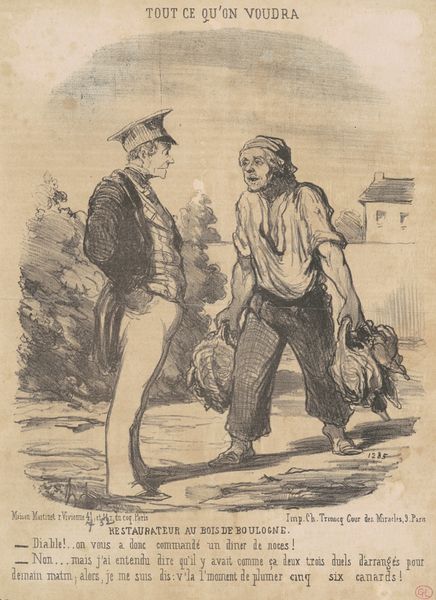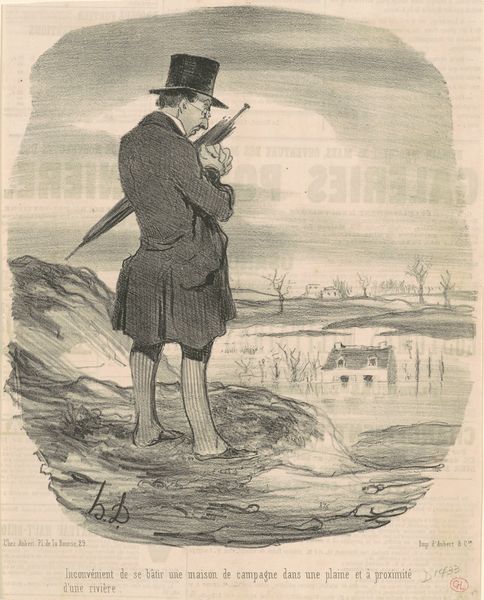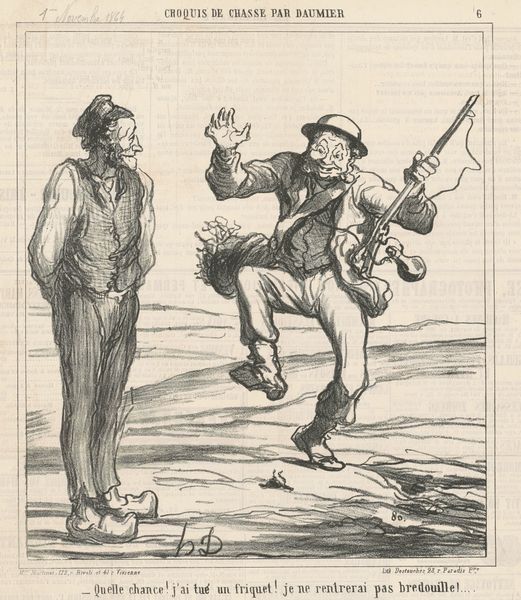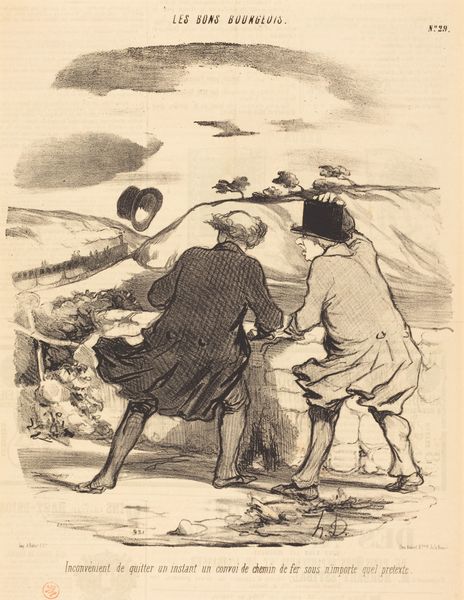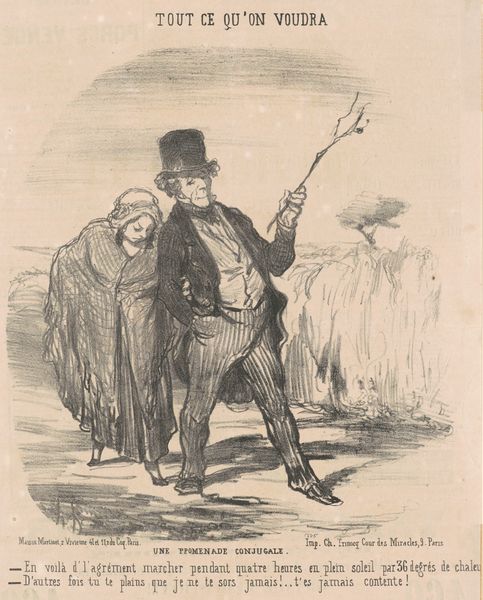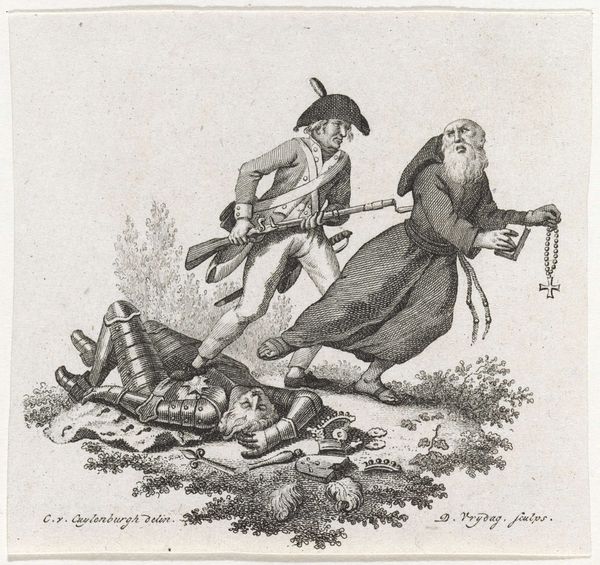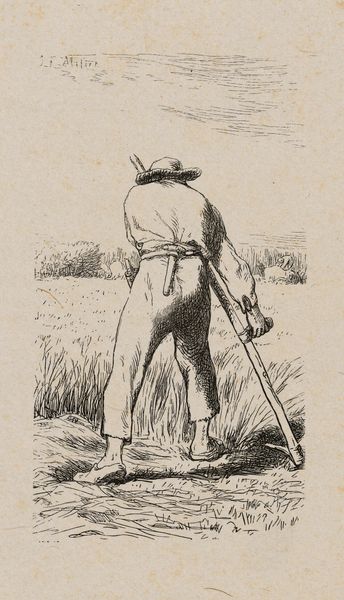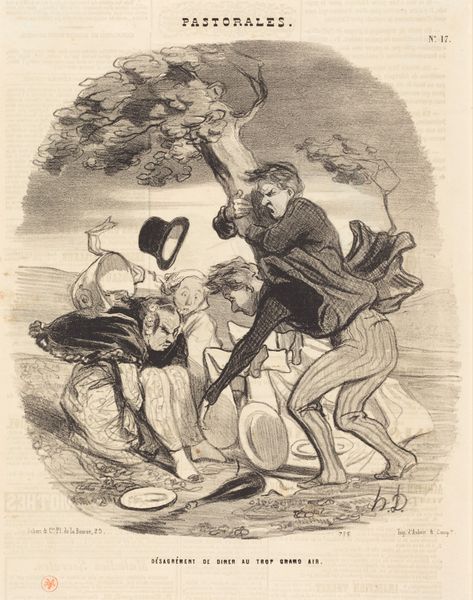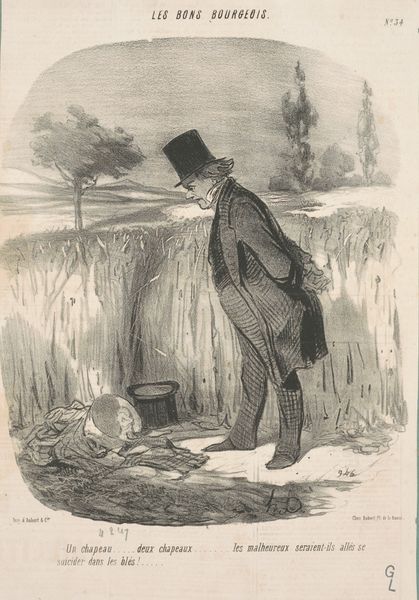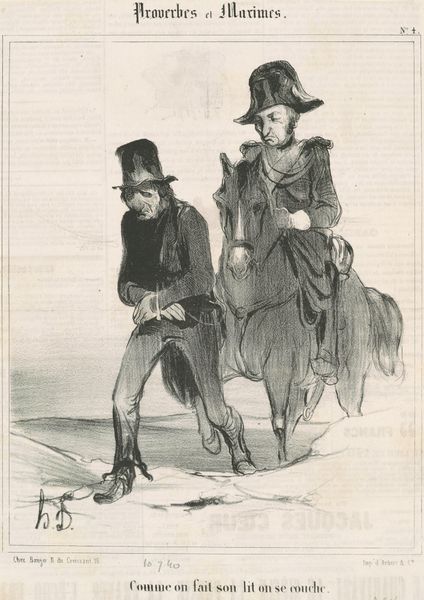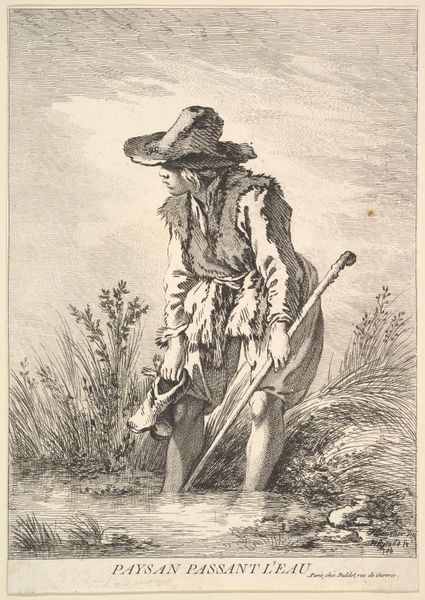
drawing, lithograph, print, paper
#
drawing
#
lithograph
# print
#
caricature
#
paper
#
romanticism
#
genre-painting
Copyright: National Gallery of Art: CC0 1.0
Curator: Well, well, this lithograph, "Quand on fait ses foins…" from 1846 by Honoré Daumier, certainly grabs your attention. Daumier was a master of social commentary, and this print, created using lithographic ink on paper, doesn't disappoint. What's your take on it? Editor: My immediate impression is utter chaos! The dynamism is incredible; the man is leaping across the freshly cut field with the energy of a startled frog. There is almost something performative in the absurdity. Is it just me, or is it humorous? Curator: Absolutely! It's Daumier at his satirical best. The title translates to "When one makes one's hay…and wants to supervise one's mowers too closely". We see the gentleman in a top hat, presumably the landowner, aghast, caught mid-air avoiding the blade of the peasant with his scythe. Daumier used caricature brilliantly to critique the bourgeoisie and their uneasy relationship with the working class during the July Monarchy in France. The tension speaks volumes about power dynamics in 19th century French society, and maybe today. Editor: Ah, there it is—the clash! You can practically feel the divide with that sharply angled scythe, the literal barrier between the two characters. He's even puffed up his cheeks in what is either outrage or simply to better navigate the hop he is doing over the cutting edge! There’s almost something grotesque and yet undeniably human about it. It’s a funny kind of mirror. Curator: Indeed. Daumier had a way of holding up a mirror to society, reflecting its flaws and absurdities. The dramatic contrast in clothing underscores the socio-economic disparities but also speaks to his place and agency in that agricultural tableau. While we might now view this as high art in the halls of a museum, pieces such as this were originally featured in magazines. It speaks to the evolving role of the art object but, as you say, it still resonates powerfully today, especially as ideas of work, privilege, and exploitation come to the fore once again. Editor: It’s interesting to think that the piece—one so of the people—ends up behind the institutions of the very class it's making fun of, right? And now we can be tickled or horrified… or, dare I say, see the satire in ourselves? Well, I, for one, feel seen. Thank you, Honoré Daumier! Curator: A sentiment I very much echo! Thank you.
Comments
No comments
Be the first to comment and join the conversation on the ultimate creative platform.
